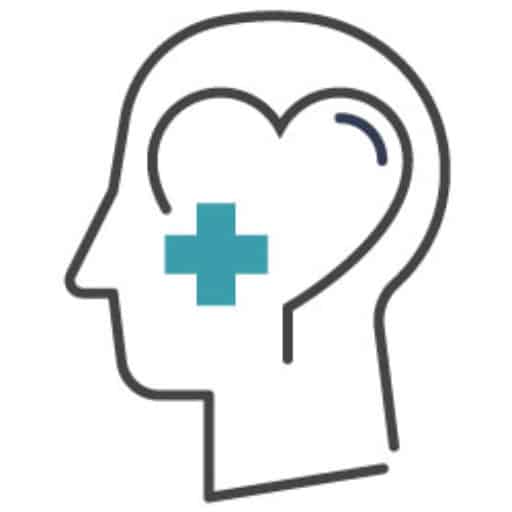According to the CDC, an estimated 51.6 million people in the United States experienced chronic pain in 2021. That’s no small number, and it’s no small problem. Chronic pain can be debilitating for those who experience it, affecting their ability to work, maintain relationships and enjoy life the way they deserve.
Fortunately, there are viable solutions to help manage chronic pain effectively, one of them being cognitive behavioral therapy, or CBT. Read on to learn more about how this therapeutic method can help mitigate chronic pain.
Cognitive Behavioral Therapy (CBT) for Chronic Pain: Understanding the Approach
Before understanding how cognitive behavioral therapy can help treat chronic pain, it’s useful to understand how it generally works. CBT is a psychological intervention in which a trained professional guides a patient through identifying negative, or sometimes implausible, thought patterns so they can better counteract them in the future.
In essence, cognitive behavioral therapy involves training the brain to re-frame negative thoughts so they no longer occur at the same debilitating rate. It’s a time-limited treatment that aims to help the patient reach a goal in a certain amount of weeks or months.
The Power of Mind-Body Connection: How CBT Can Help with Chronic Pain
So, we know that cognitive behavioral therapy can help counteract negative or harmful thoughts. But how does that help stop painful feelings from occurring in the body?
The mind and body are more connected than you might think. Chronic pain is defined as any persistent pain lasting for longer than 3 months. Often, chronic pain can be triggered by seemingly mental factors such as unresolved trauma or even the everyday stresses of life. Stress causes your muscles to become more tense than usual, and if your body is constantly in this hyper-stressed state, it’s easy for chronic pain symptoms to occur. CBT can help reduce this recurring pain in a few ways.
Pain occurs because of both physical impact and the mind’s interpretation of that pain. Studies show that using CBT for chronic pain modifies the physical sensations that cause pain and lowers instances of catastrophic thinking that make the pain more difficult to tolerate. Such studies showed the impact of CBT on people suffering from everything from fibromyalgia to headaches to back pain.
Rewiring the Brain: CBT Techniques to Manage Chronic Pain
Several aspects of cognitive behavioral therapy can be helpful for people trying to cope with chronic pain. In the early stages of CBT, a therapist can help clients set goals they’d like to reach as a result of the therapy.
Another common technique is to work with a therapist to learn how certain exercises can help reduce chronic pain. By re-framing negative thoughts, patients can learn to move their bodies more mindfully and in ways that are beneficial to treating what might be causing their physical pain. CBT helps patients accept negative thoughts that might come up as they exercise or simply notice the pain as they’re exercising rather than letting it take over. This is a skill that takes practice but can be incredibly helpful in helping patients break out of a cycle of chronic pain.
An additional major component of CBT for pain is learning relaxation techniques. Meditation can activate the part of the brain that processes pain and, for many patients, learn to reduce that pain. Mindfulness techniques can therefore be incorporated to help clients reach CBT goals with their therapists, but can also be used as lifelong methods for dealing with pain and other negative feelings.
Additionally, therapists can work with patients to both identify and challenge negative thoughts as they occur. For example, someone with chronic low back pain might have catastrophic thoughts such as “I’ll never feel better” or “I can’t exercise without feeling pain.” By first accepting these thoughts when they come up and then developing the mental strength to recognize that the thoughts aren’t necessarily true, there’s often a cumulative positive effect.
Beyond Medications: How CBT Complements Chronic Pain Treatment
CBT for pain can be used with other treatment methods to help patients achieve positive results. For example, some patients may still need pain medication, whether over-the-counter or prescription, to treat their pain. However, CBT, under the supervision of a trained therapist, can help patients develop the mental resilience they may need in addition to the medicinal treatment of their pain to achieve true relief.
Treating chronic pain is not a one-size-fits-all process. Working with experts in psychology and medicine can help each patient find the right treatment process and address the true root causes of their chronic pain.
Embracing Positive Change: Enhancing Quality of Life With CBT and Chronic Pain
Often, people become so stuck in a cycle of chronic pain that it feels like there’s no light at the end of the tunnel — they’ll always be in a battle against their pain. One of the major benefits of using CBT for pain is that it provides patients with an alternative, more positive way of thinking.
CBT provides patients with a new toolbox of coping mechanisms that can help them remain resilient despite the pain they might face. By breaking the cycle of negative thoughts, the world opens up again. Life can become more enjoyable, and once-pleasant activities no longer seem impossible due to chronic pain.
Seeking Treatment: Find a Therapist and Try CBT for Chronic Pain
If you’re struggling with chronic pain and ready to make a change, know that help is available to you. Our trained staff is available 24/7 at Restore Mental Health to take your call and get you on a path to a happier, healthier life. Contact us now and take the first step to feel less pain and live as you deserve.



